Ecdysoneless Overexpression Drives Mammary Tumorigenesis through Upregulation of C-MYC and Glucose Metabolism
- PMID: 35675041
- PMCID: PMC9437571
- DOI: 10.1158/1541-7786.MCR-22-0122
Ecdysoneless Overexpression Drives Mammary Tumorigenesis through Upregulation of C-MYC and Glucose Metabolism
Abstract
Ecdysoneless (ECD) protein is essential for embryogenesis, cell-cycle progression, and cellular stress mitigation with an emerging role in mRNA biogenesis. We have previously shown that ECD protein as well as its mRNA are overexpressed in breast cancer and ECD overexpression predicts shorter survival in patients with breast cancer. However, the genetic evidence for an oncogenic role of ECD has not been established. Here, we generated transgenic mice with mammary epithelium-targeted overexpression of an inducible human ECD transgene (ECDTg). Significantly, ECDTg mice develop mammary hyperplasia, preneoplastic lesions, and heterogeneous tumors with occasional lung metastasis. ECDTg tumors exhibit epithelial to mesenchymal transition and cancer stem cell characteristics. Organoid cultures of ECDTg tumors showed ECD dependency for in vitro oncogenic phenotype and in vivo growth when implanted in mice. RNA sequencing (RNA-seq) analysis of ECDTg tumors showed a c-MYC signature, and alterations in ECD levels regulated c-MYC mRNA and protein levels as well as glucose metabolism. ECD knockdown-induced decrease in glucose uptake was rescued by overexpression of mouse ECD as well as c-MYC. Publicly available expression data analyses showed a significant correlation of ECD and c-MYC overexpression in breast cancer, and ECD and c-MYC coexpression exhibits worse survival in patients with breast cancer. Taken together, we establish a novel role of overexpressed ECD as an oncogenesis driver in the mouse mammary gland through upregulation of c-MYC-mediated glucose metabolism.
Implications: We demonstrate ECD overexpression in the mammary gland of mice led to the development of a tumor progression model through upregulation of c-MYC signaling and glucose metabolism.
©2022 The Authors; Published by the American Association for Cancer Research.
Figures
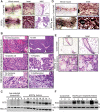
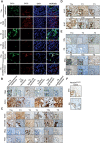
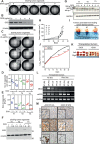
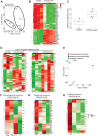
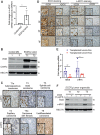
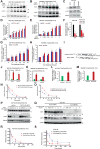
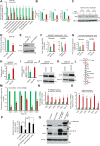
Comment in
- 1541-7786. doi: 10.1158/1541-7786.MCR-20-9-HI doi: 10.1158/1541-7786.MCR-20-9-HI
References
-
- Gaziova I, Bonnette PC, Henrich VC, Jindra M. Cell-autonomous roles of the ecdysoneless gene in Drosophila development and oogenesis. Development 2004;131:2715–25. - PubMed
Publication types
MeSH terms
Substances
Grants and funding
LinkOut - more resources
Full Text Sources
Medical
Molecular Biology Databases

